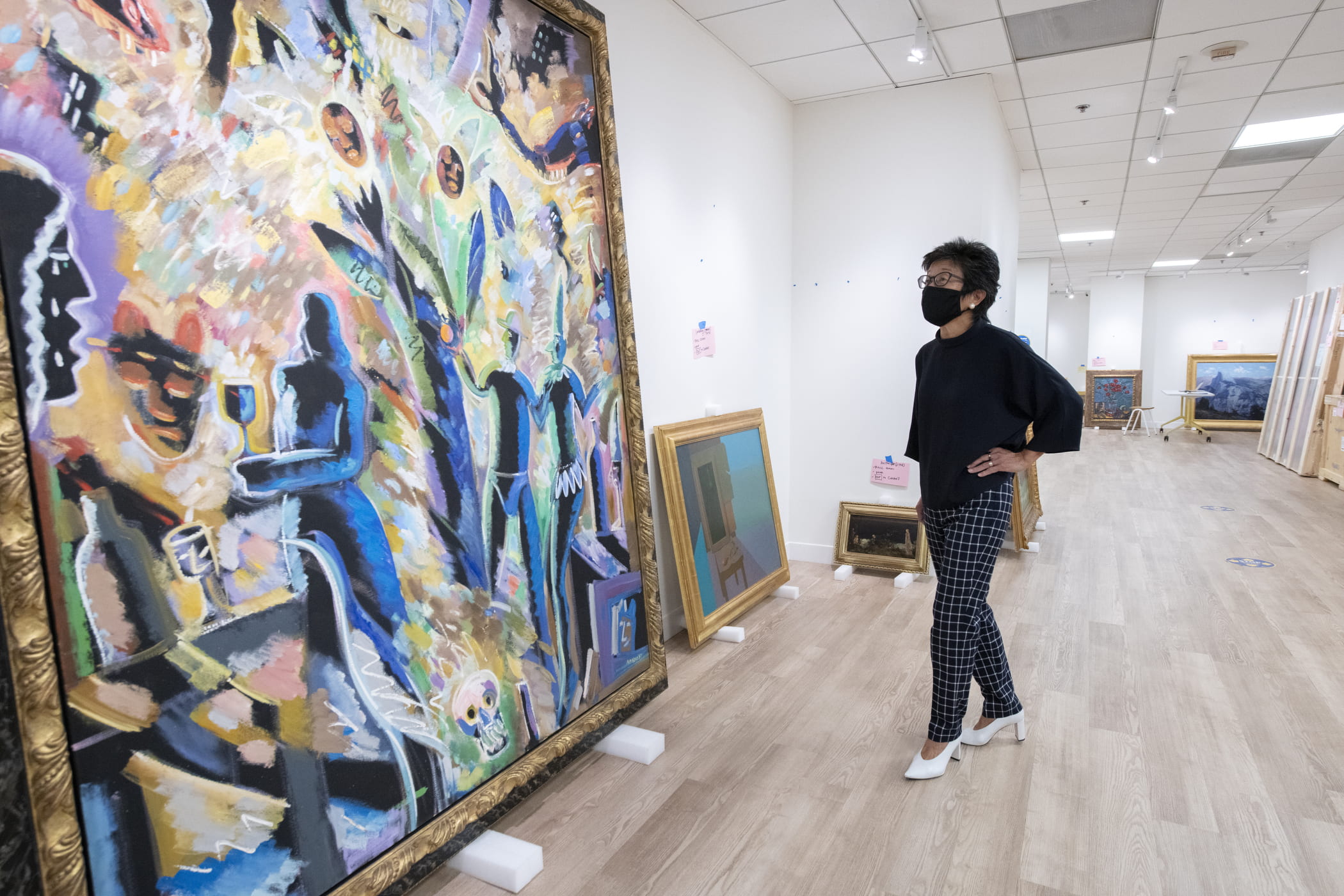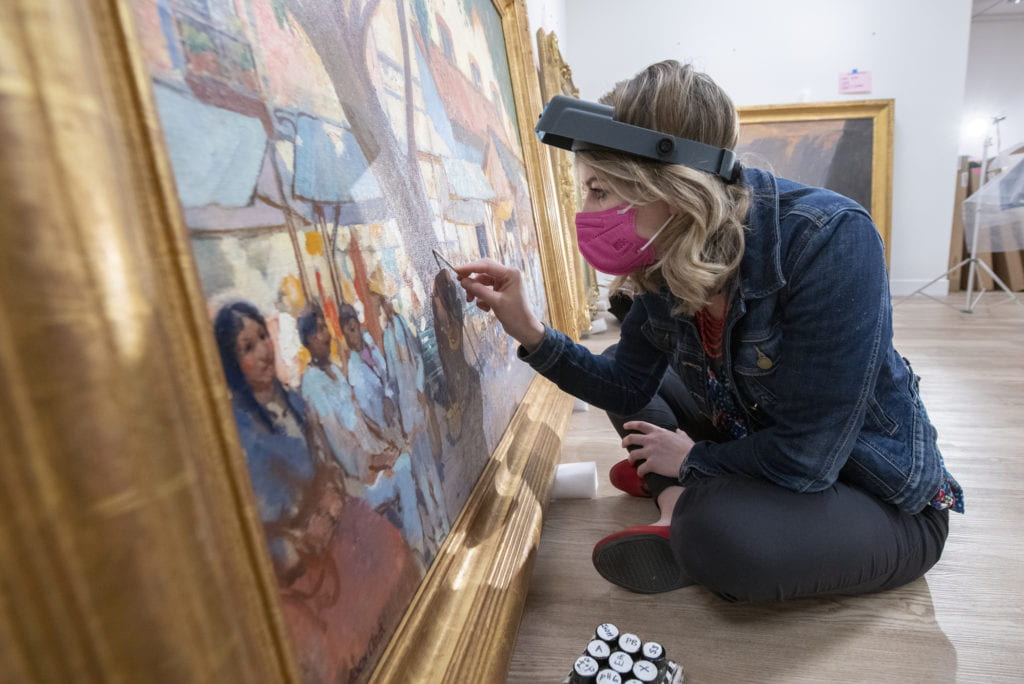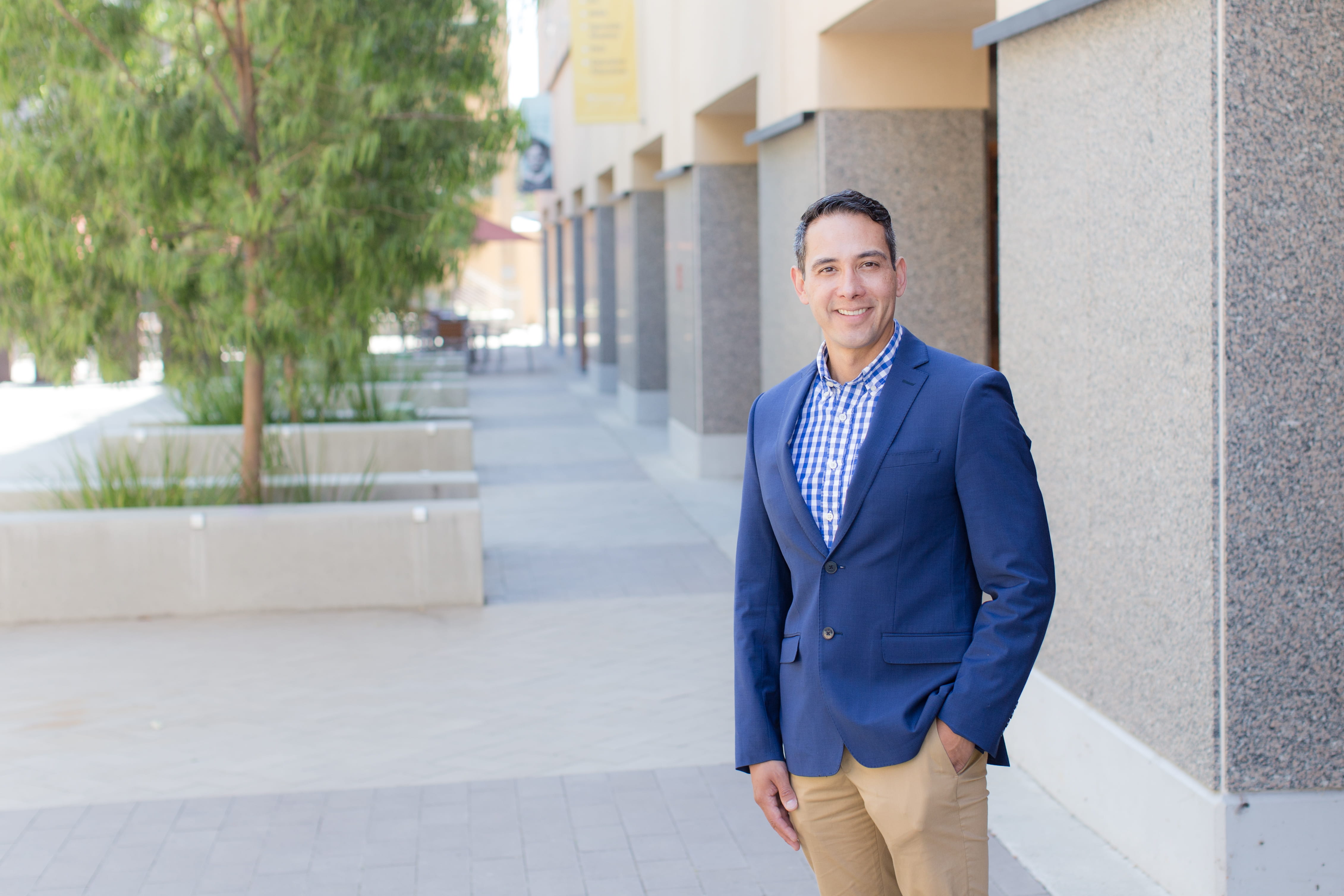Keeping up appearances
Works at UCI’s Institute and Museum of California Art are restored in anticipation of reopening gallery

The large painting leaning against the wall in the gallery extends higher than a tall person’s outstretched fingertips. It depicts a tree with a purple-black trunk and sparse green leaves sprouting from the ground, haloed by bursting star trails of yellow, white and brown. Three human silhouettes stand beneath the leaves, two admiring the tree and one, holding a goblet, turned away. At the bottom, a skull’s blank eye sockets gaze toward the tree’s roots.
Kim Kanatani, a renowned museum educator and collaborative arts producer, studies the 1989 work, entitled “Tree of Life,” by Carlos Almaraz, a pioneer in the Chicano art movement. The painting is one of dozens stationed against the walls of the Institute and Museum of California Art, which was founded by UCI in 2018.
“There are differing opinions about what constitutes California art,” says Kanatani, the museum’s director. “How we think about it at IMCA is work made in, about or by artists responding to the California experience. Almaraz, for example, was born in Mexico City, grew up in Chicago and then moved to East Los Angeles, where his cultural activism influenced his landscapes of Southern California.”
IMCA possesses more than 4,500 works of modern and contemporary art. Two private collections donated to UCI in the last five years form the heart of the museum’s holdings: The Irvine Museum Collection, which features late 19th-century and early 20th-century California impressionism, and The Gerald E. Buck Collection, which is primarily post-World War II contemporary art.
Although the museum, located in Irvine’s central business district near the John Wayne Airport, is free and generally open to the public, it has been closed since March 2020 due to the COVID-19 pandemic. As restrictions ease, IMCA staff are preparing to install the next exhibition and hope to reopen the gallery this summer.
Crated artworks brought from an off-site storage facility are stacked in the gallery on pallets, pale wood slats and plastic sheeting protecting them from scuffs and variable air conditions while in storage. Several – such as the Almaraz painting – already have been unpacked. Some depict Half Dome in Yosemite, the hills of Laguna Beach and other sites around California; others look like colorful, abstract kaleidoscopes.

Conservators from the Balboa Art Conservation Center, which has a studio and laboratory in San Diego’s Balboa Park, are on hand to examine the paintings to determine which need to be restored or given protective treatments. Morgan Wylder and Bianca Garcia, both assistant conservators of paintings at BACC, move from artwork to artwork, inspecting them for any issues.
A minor treatment might involve replacing a painting’s backing board or carefully dusting its surface. A more intensive treatment might demand transporting the piece to BACC to remove discolored varnish or stabilize weakened paint. Severe blemishes require conservators to restore a painting and visually re-create missing areas by filling in gaps from flaking or water damage with a new layer of removable paint.
Often the most challenging pieces to maintain and restore are modern and contemporary works, which can comprise a multitude of materials that degrade at different rates and sometimes interact in unexpected ways. Predictably, the most durable artworks are made of stone, ceramics or glass, though properly treated and protected oil paintings can also hold up well through the centuries.
“A painting that’s 200 years old might actually be in better shape than a new one because of how it’s been treated and stored,” Wylder says. “But usually, older paintings are more fragile simply because they’re older and, in their long lives, their materials have aged, they’ve been handled more and they’ve had more opportunities to be exposed to pollution, water damage and mold, stray food or wall paint.”
Preservation is a constant activity. Artworks are unpacked, examined, treated as needed and packed again for storage. In addition, high-resolution photos are taken, used for documentation and digital reproduction. Currently, IMCA is working through three phases of paintings that are destined for future exhibitions. And thanks to the generous support of Yasuko Bush and the late John Bush, IMCA has been able to establish a conservation fund to help underwrite this ongoing stewardship of the museum’s collection.
In his 1960s master plan for UCI, architect William Pereira envisioned a museum at the heart of campus. Such a facility would fulfill the ideal of a consolidated location for researching, storing and presenting art, without the need to transport pieces between venues. Students would be able to experience the art in person, and a partially open storage and research area could even allow the public to observe the work of preservation.
But for now, IMCA staff dutifully assess the paintings to ensure they’re properly maintained, moving them in and out of storage.
“This is part of collections management. It’s a perpetual, ongoing process. To do it well takes a lot of work and care,” says Dawn Minegar, assistant museum registrar. “And it all happens behind the scenes. For museums, it’s all part of the daily work of following best practices. We just want to make sure people can see these works forever.”


